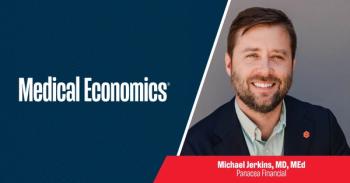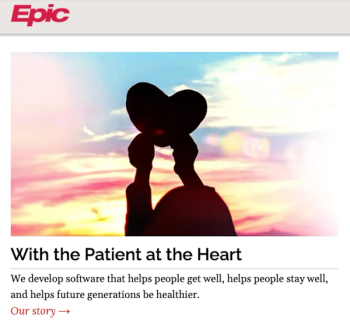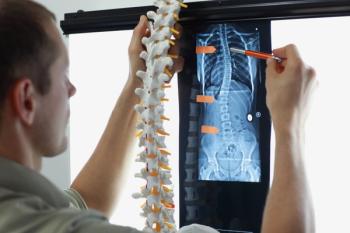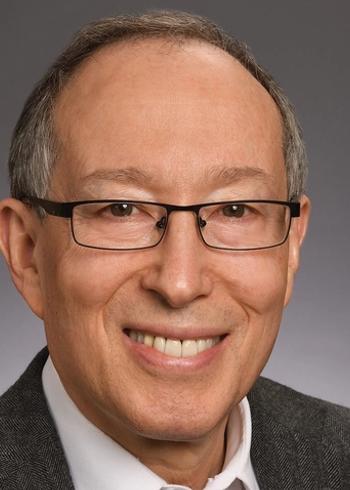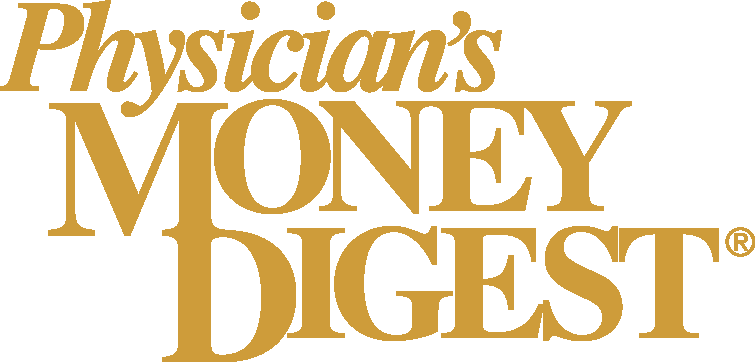We're standing at a crossroads in public health.
On one hand, we're witnessing an extraordinary era of vaccine innovation, new platforms, new protection and new possibilities for disease prevention. On the other hand, we're grappling with an unprecedented erosion of public trust and outbreaks to preventable diseases, such as measles. Vaccine misinformation is no longer a fringe issue. It's a mainstream force reshaping clinical workflows, public health strategies and national policy.
In 2025, the science for vaccines has never been stronger, but science is no longer enough.
Meet our expert panelists
Georges Benjamin, M.D., FACP
Executive Director, American Public Health Association
Jen Brull, M.D., FAAFP
President, American Academy of Family Physicians
William Schaffner, M.D.
Professor of Preventive Medicine and Infectious Diseases, Vanderbilt University School of Medicine
Professor of Pediatrics, Feinberg School of Medicine, Northwestern University; President, Infectious Diseases Society of America
Charles Vega, M.D., FAAFP
Clinical Professor of Family Medicine, Associate Dean for Culture and Community Education, University of California, Irvine
Heather Stoltzfus, M.P.H., R.N., CIC
Research Nurse Program Manager, Johns Hopkins University Division of Infectious Diseases; Consultant, Broad Street Prevention; Editorial Adviser, Infection Control Today
Medical Economics and Infection Control Today brought together a powerhouse panel of experts, frontline physicians, national policy leaders and infectious disease specialists to help us make sense of this evolving landscape. We'll examine the implications of recent policy shifts, unpack the real-world impact of vaccine hesitancy, and, most importantly, discuss how we can lead with evidence, empathy and action.
This isn't just about staying informed; it's about staying engaged. And as physicians, infection preventionists, leaders and advocates, we each have a role to play in rebuilding public confidence and reinforcing the foundational promise of public health.
The following panel discussion was recorded on April 29, 2025. The transcript has been edited for length, style and clarity.
Vaccines in 2025: Eroding trust
Heather Stoltzfus, M.P.H., R.N., CIC: To kick us off, I want to go around the panel and get your assessments on the state of vaccination in 2025. What are your thoughts on where we are as a nation when it comes to vaccine policy, patient acceptance and more?
Georges Benjamin, M.D., FACP: The real challenge we have here is we're in an era of eroding trust, increasing misinformation and, tragically, poor national leadership that we're seeing each and every day. This allows for the undermining of our capacity to maintain an era of vaccine equity and accomplishment. We've done a really good job, particularly with childhood vaccines … and now, in many ways, we're going to have to rebuild our children's vaccine programs as well as our adult programs going forward.
Jen Brull, M.D., FAAFP: We're at a pivotal moment. Vaccines continue to be one of the most powerful tools we have to protect public health. A 2024 study published in The Lancet estimated that vaccines have saved 154 million lives globally since 1974, most of them young children under 5. At the same time, we are facing a rising tide of misinformation that is eroding public confidence. The recent measles outbreaks are a stark reminder of what's at stake when our vaccination rates fall. [However,] there is good news: Trust in local leaders, especially physicians, remains strong. According to the 2024 Edelman Trust Barometer, 83% of people say they trust doctors to tell them the truth about protecting public health. As family physicians, we’re deeply connected to our patients and our communities, and we have a unique opportunity and responsibility to rebuild vaccine confidence one conversation at a time.
William Schaffner, M.D.: It's difficult to be more eloquent than my colleagues already have been. They've made the point very, very clearly. I think we are in a tenuous current position with vaccines, and that saddens my heart profoundly. This issue of trust, mentioned by Dr. Benjamin, is critical. We have to restore that trust, not just in vaccines, but in public health and medicine in general. I come back to that old equation: Disease, bad; vaccines, good.
Tina Q. Tan, M.D.,FIDSA, FPIDS, FAAP: I definitely echo everything that my esteemed colleagues have said. With the erosion of trust and with the significant increase in vaccine hesitancy, anti-science, misinformation, and vaccine refusal — this is a major issue for pediatric patients because they can't advocate for themselves to protect themselves. We need to be strong advocates and try to counteract what is being put out on social media because that's where a lot of parents are getting their misinformation, and it spreads very quickly.
Charles Vega, M.D., FAAFP: Five years ago, I did not experience vaccine hesitancy or refusal in my community health center. It was something I heard about, and I was concerned with, but never personally dealt with. That's changed for all of us since the COVID-19 pandemic. Now, we have this real duty and a call to action. I would just say to those on the front lines: Don't give up. You're a health care professional, and as Dr. Brull said, you are the trusted person here. It's not the crazy aunt or uncle. It's not the influencer [on social media]. It's you as a health care professional.
Don't stop trying. How many times have you had that patient you talked about the vaccine with three times, four times. This vaccine X — doesn't matter which one — and suddenly just something clicks, and the patient says, “Fine, doc, I'll get it. You got me. That's a good idea.” Those little wins go a long way. And when you establish that trust, it's not just the vaccines that get done. It's the breast cancer screening, it's the regular use of antidiabetes medications, it's lifestyle changes that promote healthier living and so on. Vaccines can really be a catalyst for a better health exchange with your patients.
The good news: Vaccine innovation is flourishing
Stoltzfus: Let's discuss what we've seen over the past few years [regarding vaccine] innovation. I know we've seen a lot of significant innovation over the past few years, from vaccines for RSV [respiratory syncytial virus] to new mRNA platforms. Dr. Schaffner, how would you describe the current state of vaccine innovation in the United States?
Schaffner: The state of the research and the production of new vaccines is flourishing and exciting. Just think about this: Recently, new and improved vaccines have come out against mpox, RSV, pneumococcal infections, Lyme disease, dengue, CMV [cytomegalovirus], chikungunya. We're now thinking about giving fewer doses of HPV vaccine, because that vaccine is so fabulously effective. My goodness!
We're also thinking about new ways to deliver vaccines through microneedle patches. Maybe that will be something. Oral vaccines: What a way to deliver vaccines in the future. All of that's in the works, that kind of investigative research ferment is out there.
That said, let me remind everyone that, as our colleague [Walter M. Ornstein, M.D.] likes to say: “Vaccines don't prevent disease. Vaccination prevents disease.” A vaccine in the refrigerator has never prevented a single case of infection.
So, where we need even more investigation and innovation energy is in the delivery of vaccines. How do we bring these diverse populations in this wonderfully diverse country that we have closer to the vaccine so we can move it out of the refrigerator and into the arm? We need to do much more work. Much has to be done locally, as Dr. Vega said, by each individual health care provider.
Tan: Dr. Schaffner just summarized it fantastically. Obviously, the goal is to develop and produce the safest and most effective vaccines but if you can't get them to the patients, that's a problem. That's the issue that is becoming more widespread with these new policies and executive orders that the [President Donald J. Trump] administration has put out. For example, we were providing vaccines and other medications to low- to middle-income countries [through the United States Agency for International Development, which has been cut], and now they don't have the people to administer the vaccines, so you can't get the medication or the vaccine to these individuals. That is a major problem.
As Dr. Schaffner mentioned, there are other vaccine types that are in development — oral, intranasal — and there are other platforms that are being studied. You have viral vector platforms, you have DNA vaccine platforms, synthetic virus platforms, nanoparticle vaccine platforms. This is all very, very exciting, because they're all different platforms that are being looked at to produce safe and effective vaccines more rapidly. A new vaccine that's in development that used an mRNA platform for use in infants and children is a combination human meta pneumovirus and parainfluenza, type 3 virus. And we know that during respiratory seasons, both these viruses cause a lot of diseases in infants and children. We have to continue to advocate for the incredible research that is being done.
The bad news: Health policy is undermining vaccines
Stoltzfus: From a policy standpoint, in 2025, I think it's safe to say that everything is different. There's growing concern about the political leadership of HHS [US Department of Health and Human Services] and how vaccine-related decisions are being made. Dr. Benjamin, how are current federal policies impacting public health vaccination goals?
Benjamin: I like to think about this in three areas: policy, coherent messaging and infrastructure. We had a very rational and science-driven process to evaluate vaccines, from the regulatory aspect through the FDA, and then to the CDC, which would refine which patients would get which vaccines under what conditions. Then collectively, the federal government would make a national recommendation, and we would implement those recommendations based on the systems we had in place. For example, during [the] COVID-19 [pandemic], we increased the number of people to [receive] shots and the number of places to [administer] shots and improved our ability to get people to those places to get shots in arms.
That's been taken apart. We've had a lack of consistent, coherent messaging. It's all right to get your measles shot, but maybe not. This lack of coherent messaging means that we've learned nothing about risk communication, about the importance of consistent messaging that's evidence-based.
Finally, as Dr Schaffner said best, as he always does, vaccines do no one any good in the freezer on the shelf. The challenge is the administration has, quite frankly, taken apart the infrastructure to get shots in arms. The core public health infrastructure right now has been decimated already. Look at the measles outbreak that we have right now. When the funding cuts hit, that trickles down to local communities and [it] has disrupted the federal, state and local partnerships that we have for vaccines. We're very concerned about this. We're hoping, in the next 100 days, the administration reverses course. The system needs to be rebuilt.
Pediatric vaccination: Eroding trust, declining rates
Stoltzfus: I want to shift our focus and talk about pediatrics. In many ways, pediatric vaccination is what's under fire. We're seeing consistently declining vaccination rates, and according to many polls, age-appropriate vaccination is now deemed less important by parents with every year. We've mentioned the measles outbreak previously, but to share some statistics, it's spreading to more than 25 states, and it has already resulted in the death of two unvaccinated children.
Dr. Tan, can you explain the current state of pediatric vaccination and what you think we need to do to push back against some of these troubling trends and troubling events?
Tan: What we're seeing is a significant decline in pediatric routine vaccination rates, with a marked increase in parents who are vaccine hesitant, who are anti-science and who are anti-vaccine. Much of this information and disinformation is being spread widely, as I mentioned before, by social media. They basically believe their aunt, their uncle, their cousin, who says, “No, you should not give your child the vaccine. It's not worth it. Vaccines are experimental.” The results of all this are these kids not being vaccinated.
As health care providers, we need to continue to strongly advocate for and provide the best care to our patients and encourage them to be vaccinated, as this is the best mode of protection for persons of every age, but especially for infants and children. We need to take the time to speak with our vaccine-hesitant patients to find out what their concerns are about the vaccines and address these concerns in an empathetic manner and provide them with scientifically sound information to get them to understand the importance of vaccines and protecting their children and their family.
The education problem
Stoltzfus: Dr. Schaffner, can you tell me what policy levers — federal, state, or local — we could pull that could have the biggest impact on our vaccine acceptance as a society?
Schaffner: Well, do you want the good news or the bad news? I don't think I would have said that a year and a half ago, but we're concerned now about national policies that, in a variety of ways, discourage vaccination.
I'm going to open this up a bit for consideration. We in medicine and public health have taken this problem on. This is a medical and public health problem. Yes, I'm going to expand that a bit because I also think it's an educational problem. If you take a quick look at the health curricula in middle school and high school, you’ll find that vaccines are taught modestly [and] erratically, and certainly preventable diseases themselves are hardly ever mentioned. I think if we went to high school seniors and asked them two simple questions: “What's a vaccine? And how does a vaccine work?” and hoped for simple declarative and correct responses, I don't think we would get them very often. We need to expand our reach and reach out to our colleagues in education and get the curriculum [about vaccines and vaccine-preventable diseases] in middle school and high school enhanced.
Remember, a high school senior in a few years is the parent asking the questions.
Benjamin: Absolutely. I think that one of the challenges we have is the issue of health literacy in our population. We have a population of people who don't know first aid, they really don't understand the human body, human biology. The sciences have been deemphasized. Reemphasizing science is certainly our first step.
The other thing we need to do is a better job of making our policymakers more scientifically literate. There’s a gap there as well, and I think there's an enormous opportunity for our professional societies. If the federal government won't do it, I think the professional societies can fill that gap. We heard earlier from Dr. Brull about how trusted physicians are, and we're still very trusted. And I think there's an opportunity there for us to serve as the chief health advisers to our local elected officials, and then at the state and national level. There's a big opportunity there to rebuild that relationship so that they'll come to us when they're doing policymaking.
Vega: This is a fascinating line of conversation that I believe in. One thing that's been laid bare as Dr. Tan and others mentioned, is anti-science. Over the past five years, we’ve seen just what a huge gap there is in the understanding of science and the scientific method.
It was incredible that the COVID-19 vaccines in that first iteration were so effective. But then with the mutations of the virus, naturally the vaccines were less effective — while still effective for preventing severe disease — but other vaccines were tried and didn't have very strong efficacy. So, I got a sense from the public [that they thought,] “See, nobody knows what they're doing.” Therefore, we can throw out the whole lot of it. It takes a bit of distrust and a bit of confusion to result in: “I'm just going to dismiss vaccines out of hand.”
Everything we're talking about is really going to take time. Dig in for the long haul. We really need a better grasp of science as a society.
In the exam room: That crucial conversation
Stoltzfus: Dr. Brull, how would you approach a patient, a parent or a caregiver who's already skeptical, maybe because of something they've seen or they've read or heard online?
Brull: I'm always reassured that when Edelman does its trust barometer, physicians, and particularly primary care specialists, rise to the top there. And I'm reminded that trust is earned in drops and lost in buckets, and this is a time when we're sort of going through that bucketing as a society around the tools that medicine and science have given us to combat disease.
When a patient trusts me enough to open that conversation to tell me they are worried about a recommendation that I've made, I always approach that as Dr. Tan does with listening. I assume good intent — most people want to do what is healthiest and best for them, their children, their families. Understanding where that hesitation comes from is key. Did it come from a social media post? Did it come from a family member? Did it come from a personal experience with vaccines? Finding that out is always a good step. Next, really dig in to understand what piece of the puzzle is distressing the patient the most. If I start with a spiel that lands on none of the questions or concerns they have, I am not going to move a vaccine from the refrigerator to an arm.
It is all about demonstrating that I trust them to have this conversation, and I trust that their concerns are valid, and I'm in it for the long haul. If you don't make this decision today, I want to leave that conversation open for you to call me back tomorrow or to have another conversation in a month when I see you again. I very carefully don't burn any capital in those conversations but rather extend my trust in our relationship.
Finally, the tactic that I always use is talking about my family and my personal choices and their personal choices. I used to say, in practice, let me take off my doctor hat, let me put on my mom hat. Everybody in my small community knew I had three children, and when I said all three of my kids got this vaccine, it meant a lot more because I made that decision as a mom, not as a doctor.
Vega: Dr. Brull, that’s excellent advice. You personalize the experience. You talk about it from your perspective. It’s not a time to bring up the CDC, not a time to just whip out charts on vaccine efficacy versus side effects.
At the front end of the conversation, it is important to practice active listening. I use an iterative approach, and I try to explore a patient’s reasoning. Many times, there's not a specific reason. There’s a general [unease] with the concept of vaccination. Therefore, it's working with patients and guiding them gently back to the benefits of vaccination, which are manifold. I feel that's the best approach.
I would add, when we think about important influences, make sure that you talk to your staff. Because if you have one of your staff when they're actually applying that vaccine to a patient’s arm, saying, “Yeah, I don't know about this vaccine, I heard some sketchy things about it,” that can explode everything you tried to construct. You really need a team approach. We're all part of the health care team with a patient in the center, so [ensure] that's something you address early before you initiate those vaccine discussions.
Rebuilding trust
Stoltzfus: Dr. Benjamin, how can clinicians use their role to rebuild vaccine confidence in the populations that they serve?
Benjamin: This is a responsibility for all clinicians, and so I tell people, even if you're not someone who gives vaccinations as a part of your routine practice, be informed, because in the public's mind, a doctor is a doctor is a doctor. So be informed, so that you can speak confidently about current recommendations. Then normalize vaccine delivery so it's not viewed as something outside the normative practice so people see it as part of routine care. We take their blood pressure, we take their temperature, we take their pulse [oximetry], and we talk about screening for diseases, and we ask, “What's your vaccine status today?” So they hear that every time they walk into the office as part of their routine.
As we heard from Dr. Tan and Dr. Vega: Listen, listen, listen. Listen for those clues that there may be some concerns, and when [patients] express those concerns, that's the key to stop, open up your ears, close your mouth and understand the best way to move forward. It will save you a lot of heartburn [when dealing] with those patients in the future.
The role of medical societies
Stoltzfus: Dr. Tan and Dr. Brull, you're both now leading national associations: the Infectious Diseases Society of America (IDSA) for Dr. Tan and the American Academy of Family Physicians (AAFP) for Dr. Brull. From your vantage points, what role should physician specialty societies play in pushing back against some of these harmful policy changes and advocating for clinicians and the patients they serve?
Tan: In these very tumultuous and chaotic times, the role and actions of physician specialty societies are now significantly more important than they ever have been. We need to advocate for and fight for our colleagues and the patients we are privileged to serve.
One of the big things is that working collaboratively as a coalition of societies on a variety of issues provides a much stronger voice, and our message will have a much greater impact. I can tell you at the IDSA that's what we've been doing. We've been trying to expand the spectrum of individuals [with whom] we speak, whether they are our members, whether they are members of other societies, whether they are our patients, whether they are the people in Congress and their aides. We've tried to reach out to HHS Secretary Robert F. Kennedy Jr. to get an appointment to meet with him. We're trying to educate the policymakers on why certain cuts and executive orders are not appropriate because they will severely impact the health of every single American.
Brull: Physician organizations such as the AAFP and IDSA have a crucial role to play in standing up for evidence-based policies and pushing back against the harmful rhetoric that is all too common these days. At the AAFP, our focus is on truth, transparency and trust. We use platforms such as familydoctor.org, which is updated regularly with evidence-based articles and resources to ensure that patients across the United States have access to reliable and accurate information. We also stand up as an organization, both individually and with groups of other organizations, and advocate for truth in vaccines and truth in health.
Our situation today reminds me of my favorite children's book, which is called The Emperor's New Clothes, in which a very kind but egocentric emperor is hoodwinked into believing that someone has come to sell him new clothes out of a thread and a fabric that are so fine that only the most important people can see it. It gets all the way to the point where the emperor is wearing his new clothes in a parade to show them off, and all the people are saying what beautiful new clothes they are, until one child in the crowd says, “Hey, y'all, the emperor has no clothes on!” I think that it's organizations like ours that are responsible for saying that the emperor is not wearing any clothes.
Practical tips for everyday vaccine encounters
Stoltzfus: I want to open this up to the entire panel: What practical thing can every clinician start doing to combat vaccine misinformation?
Benjamin: The most important thing they can do is know what the common myths are about vaccinations and understand what the evidence-based answers to those questions are so they're [ready to address them] when patients walk into their office.
Brull: To keep it short and sweet, every family doctor can make it routine to talk about vaccines at each visit and capitalize on the continuous relationship that we have with our patients, always offering the opportunity to take a healthy step in the right direction.
Schaffner: All of those things, of course, are very important. Secondly, physicians are members of their local Rotary Clubs. They are in their Lions Club, their Kiwanis. They can offer to talk to those groups, answer their questions about vaccines. Perhaps the local chapter of a medical society can put in an op-ed in the local paper, be ready to answer the questions of your local journalists and reinforce the importance of vaccination. Communicate in as many forms and opportunities and forums as possible. To conclude, I'll come back to what my colleagues have said day to day with each patient: Listen and then provide reassurance.
Tan: I completely agree with reaching out to community stakeholders and having them understand why vaccination is so important.
Vega: I love all the wisdom here. I would just bring up the concept of self-care for us and the health care team. We all went into this profession to try to help patients, to partner with them, and here we're seeing an issue where we might be opposed. That's something we talked about, strategies to work through that, but it can be tiring, and it can be frustrating, and it can make you feel angry. You're not going to get everybody [to get vaccinated], but if you keep trying, you'll get a good number, I think a majority if you really practice in a patient-centered way and use some of the techniques that have been so eloquently described here today.
So don't give up. But also, when you go home at night, don't take it home with you. Relax. There’s going to be another chance tomorrow.
The path forward
Stoltzfus: For each panelist: Do you have any final words for our physician audience?
Vega:We've faced different health crises and challenges before. Think back to where we were just a few years ago, how we started to band together, and everybody was working to the best of their abilities in a crisis. We're facing another crisis right now, but we've shown we can overcome it.
Tan: It's important that we continue to work together, to continue to strongly advocate for our colleagues as well as our patients, and really strongly endorse the use of vaccines as the best way to protect them against these vaccine-preventable diseases.
Schaffner: Well, I think I might end on a lighter note. I'm thinking back to Hollywood star Mae West, of yesteryear, who I don't think was thinking about vaccines when she said, “Too much of a good thing can be woinderful.” But it definitely works for vaccines.
Brull: I'm going to continue the trend of using quotes from others. One of my favorite quotes is a Chinese proverb that says: The best time to plant a tree was 20 years ago. The second-best time is [now]. Vaccines are safe, they are effective, and they save lives, and today is the best day to get vaccinated if you haven't had a chance to do so before now.
Benjamin: I trust my patients, I trust vaccines, and I get up every morning thinking about how to improve the health of the American people through the association in which I work. We believe that vaccines are one of the most effective tools we have. As we go forward and we're in this relatively hostile environment against vaccines, I think we should remember that patients are pretty smart, and if we give them the right information, they'll make decisions that will improve their health, which means they'll get vaccinated.
Closing remarks
Stoltzfus: Thank you all for an honest, insightful and deeply important conversation.
Today, we’ve explored more than just the science of vaccines—we’ve confronted the fragile intersection of public policy, perception, and public trust. We’ve acknowledged the extraordinary power of scientific innovation, but also the extraordinary responsibility that comes with it.
To our panelists: Thank you for your time and commitment to medicine.
The future of vaccination in America won’t be shaped by science alone. It will be shaped by the stories we tell, the conversations we foster, and the trust we work every day to rebuild. Let’s keep challenging assumptions, connecting with our communities, and speaking boldly in defense of scientific evidence, empathy, and health equity. Thank you.

